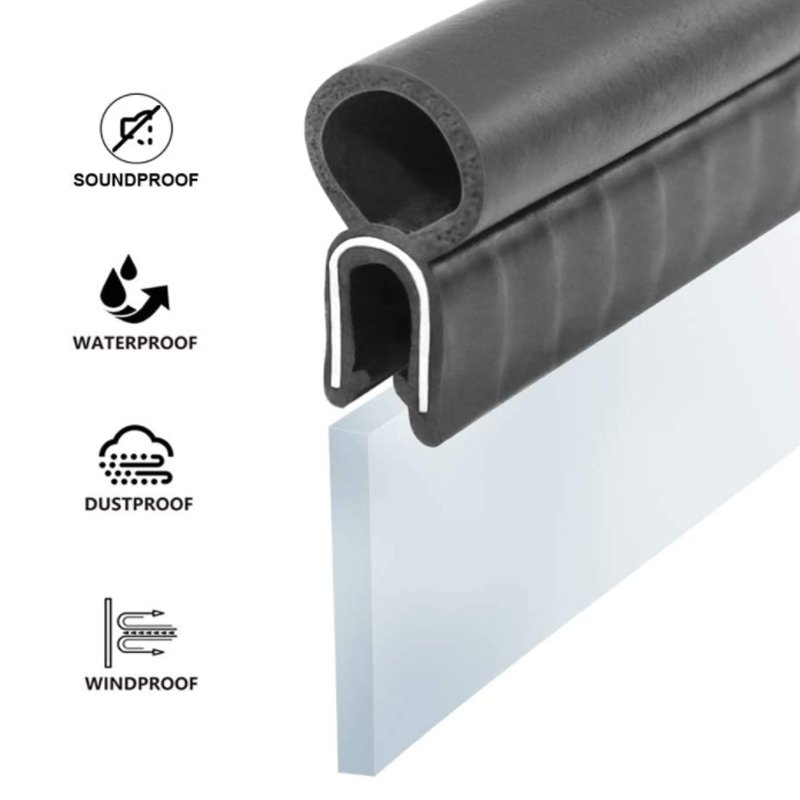A waterproof rubber sealing strip is a type of weatherstripping used to seal gaps and prevent water, air, dust, and other elements from entering or exiting a structure or vehicle. It is typically made of high-quality rubber material that is durable and flexible, and can be applied to windows, doors, and other openings to create a watertight seal.
When choosing a waterproof rubber sealing strip, consider the following factors:
Material: Choose a high-quality rubber material that is durable and flexible, and can withstand exposure to weather, UV rays, and chemicals.
Size and shape: Choose a sealing strip with the appropriate size and shape to fit the gap or opening it will be sealing.
Adhesive: Look for a sealing strip with a strong adhesive backing to ensure it stays in place and provides a secure seal.
Compression: Choose a sealing strip with the appropriate compression level to ensure a tight seal and prevent leaks.
Compatibility: Ensure that the sealing strip is compatible with the surface it will be applied to, such as glass, metal, or plastic.
Some popular brands of waterproof rubber sealing strips include Trim-Lok, Weather Stripping Seal Strip, and M-D Building Products. waterproof rubber sealing strip It’s important to follow manufacturer instructions for installation and maintenance, and to regularly inspect the sealing strip for signs of wear or damage. A properly installed and maintained waterproof rubber sealing strip can prevent water damage and improve indoor air quality.
To choose the right size and shape of sealing strip for your needs, you will need to measure the gap or opening that you want to seal.
Here are the steps to follow:
Measure the width of the gap: Use a tape measure or ruler to measure the width of the gap or opening you want to seal. Record this measurement in inches or millimeters.
Choose the appropriate shape: Based on the shape of the gap or opening, choose a sealing strip with a shape that will fit snugly and create a tight seal. Some common shapes include D-shape, P-shape, and T-shape.
Measure the length needed: Measure the length of the gap or opening that you want to seal. Use the measurement from step 1 to determine the appropriate size of the sealing strip.
Choose the appropriate compression level: Choose a sealing strip with the appropriate compression level to ensure a tight seal and prevent leaks. The compression level will depend on the material and width of the sealing strip.
Consider additional factors: Consider other factors such as adhesive strength, material compatibility, and durability when selecting a sealing strip.
Once you have determined the appropriate size and shape of the sealing strip, follow manufacturer instructions for installation and maintenance. It’s important to regularly inspect the sealing strip for signs of wear or damage and replace it as needed to maintain a watertight seal.
